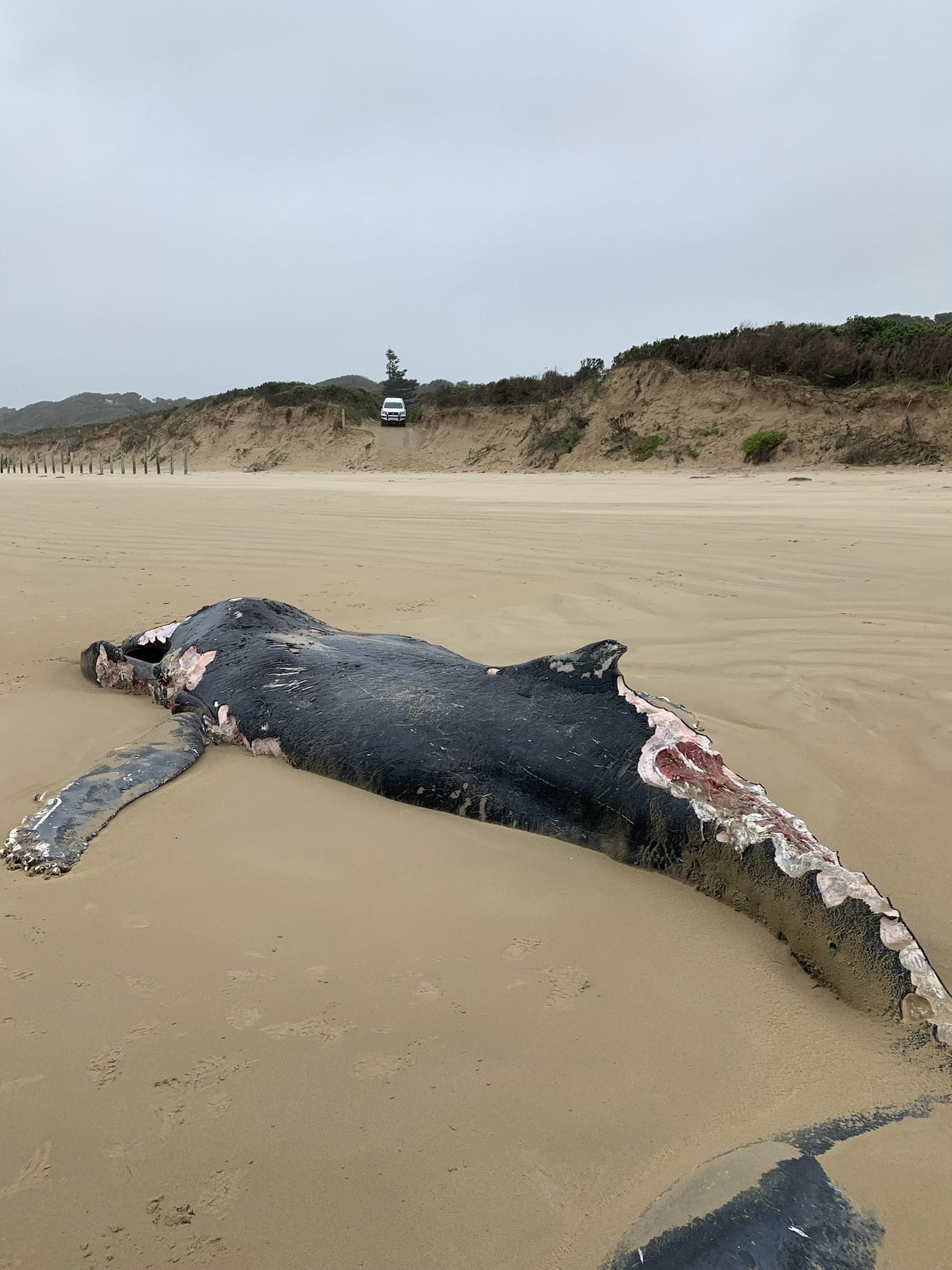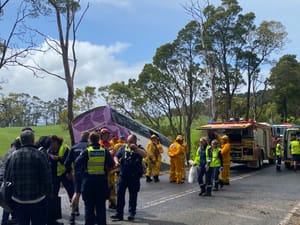It all started with an alert on the Vic Emergency App one Thursday morning in late September. And it wasn’t long before cafes and breakfast tables were abuzz with the news a whale calf had beached itself at Sandy Point.
As the day went on, we learned it was a deceased eight metre juvenile humpback whale that had washed up on the beach a few hundred metres from the surf lifesaving club. And the beach was to be closed to the public until further notice.
Signage was installed and people were asked to keep off the beach for their own safety.
A shark warning had been triggered for the local area, and when photos of the caracas materialised, it was plain to see why.
The whale was partially eaten by sharks before washing up on the beach. With a high likelihood of sharks remaining in the vicinity, anyone foolish enough to enter the water down near the point would likely not be returning to shore or at least have a bloody good bite taken out of them given the chunks taken from the humpback.
Whales are protected under the Wildlife Act – regardless of whether they are alive or dead – making it an offence to interfere with, take or be in possession of parts of a dead whale.
DEECA put out a message that “it is an offence for people or their dogs to be within 300 metres of a whale.”
The next day, after overnight tides moved the whale along the beach, visitors were allowed back on to part of the beach but the 300m exclusion zone remained around the dead whale.
Authorities reminded the public that sharks were likely to remain in the areas for some time as they themselves figured out what to do with the carcass once coming to the conclusion that there was, “little likelihood that it will be washed back into the ocean.”
Then on the following Sunday we read that the Incident Management Team, after investigating viable methods for removal, had decided towing the carcass a few kilometres up the beach and burying it would be the sensible course of action.
Not so according to the internet. “You have failed us once again DEECA Gippsland. Not good enough”, came one reply to DEECA’s post informing the public they had used a 25-tonne excavator to tow the whale a few kilometres towards Shallow Inlet, where it was buried to a depth of 2.5 metres.
Questions started being asked, “Out of curiosity, was the whale carcass buried above the water table and high tide mark?”, came one. “How did the whale burial at Kingscliff NSW go? 6 months later the sand is eroded an[sic] the whale gets washed down the beach”, came another.
Speculation was rife. “That’s going to leach out into the sea. You get big sharks pupping not too far from hear[sic]. So will you alert swimmers and surfers at the prom. Cause it won’t be safe”, “the way the currents run it’s going to impact where everybody swims out front of the lifesaver’s club house”, and “not good. We get 20 foot whites here. Crazy. Went the cheap way”, were just some of the comments on DEECA’s facebook post from concerned locals.
According to DEECA though, “The whale could not be towed back to sea as it could pose a danger to boating and shipping, especially small recreational watercraft that are popular in the area.”
They continued, “The whale may also have washed back onto Sandy Point, or a nearby beach, before it could sink to the sea floor.
Burying the whale at a depth of 2.5 metres should minimise the risk of leaching.”
And then, months before they should be seen, if at all, someone posted on the Sandy Point Community Group that Bluebottle Jellyfish have arrived.
Anyone hearing the darr-dumm soundtrack by John Williams can be forgiven.
A final warning from DEECA, …Sharks may linger in the area for some time, so please stay-up-to-date with warnings via the Vic Emergency website and app https://emergency.vic.gov.au/respond/ David Barrett



